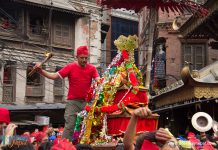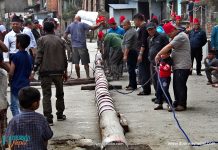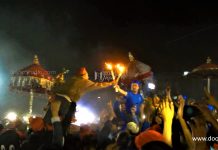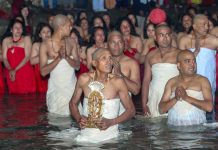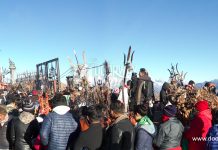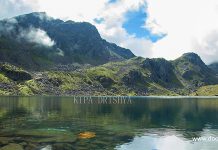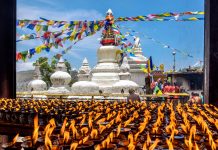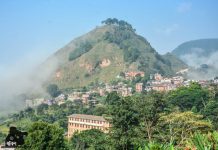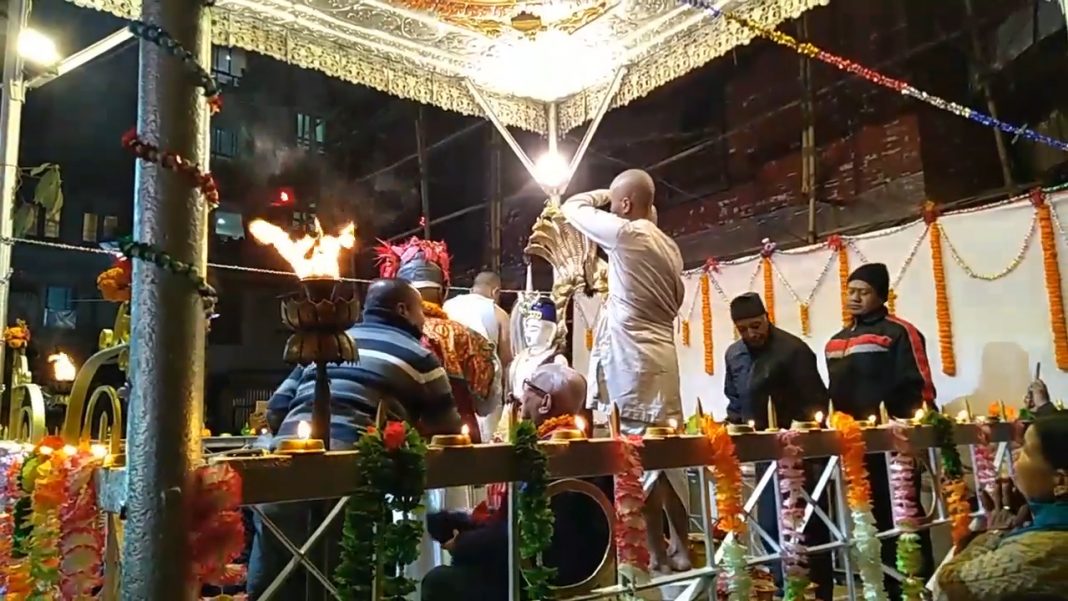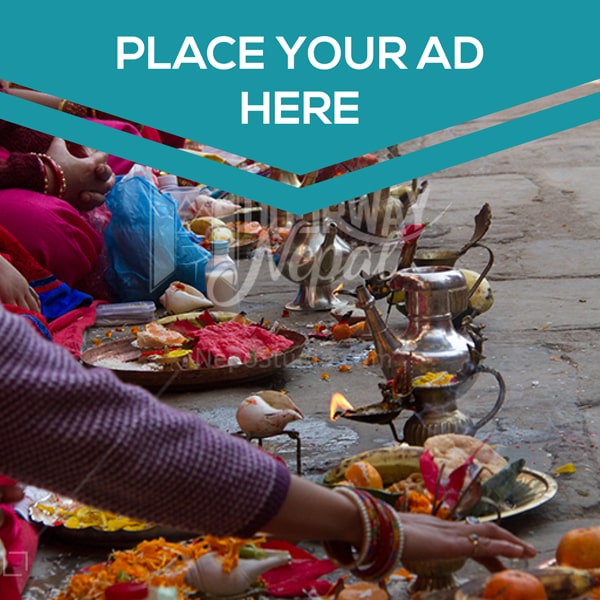Of the many Macchendra idols in the valley, Seto Macchendranath of Kathmandu comes second in popularity. The first one is the famous Rato Machhendra in Patan. Some believe these two idols represent the same god. But most consider them sisters endowed with both male and female aspects. Even though they be male in appearance and Buddhist scripture. Each is paraded annually through the streets in majestic festival chariots, and each is identified as the Buddhist saint, Aryaavalokitesor, who attained the stature of Buddha in age past.
White Machhendra is also widely worshipped by devotees of Shiva and Vishnu. It is believed that he bestows the priceless gift of longevity, especially upon children, and removes the cause of sterility in women. A merciful God of Pity, known as the ‘Ocean of Compassion’.
Seto Macchendranath is also known as Janabahaa Dyo, Aryaavalokitesor and Karunamaya Lokesor. It is believed Seto Macchendra has the capacity of relieving all beings from any kinds of suffering. Just as Nepali religions require the people to cleanse themselves periodically with ritual holy baths, so the gods themselves must be washed on occasions. Idols of Gods are drenched with daily offerings of red powder, holy water, milk, honey, liquors, and blackened with smoke from ceremonial lamps, flaming oil wicks and smoldering incense. Thus the god’s annual holy bath is a multiple blessing, providing an opportunity to deck God’s idol in splendid new robes and, most important perhaps, a chance to celebrate once more.
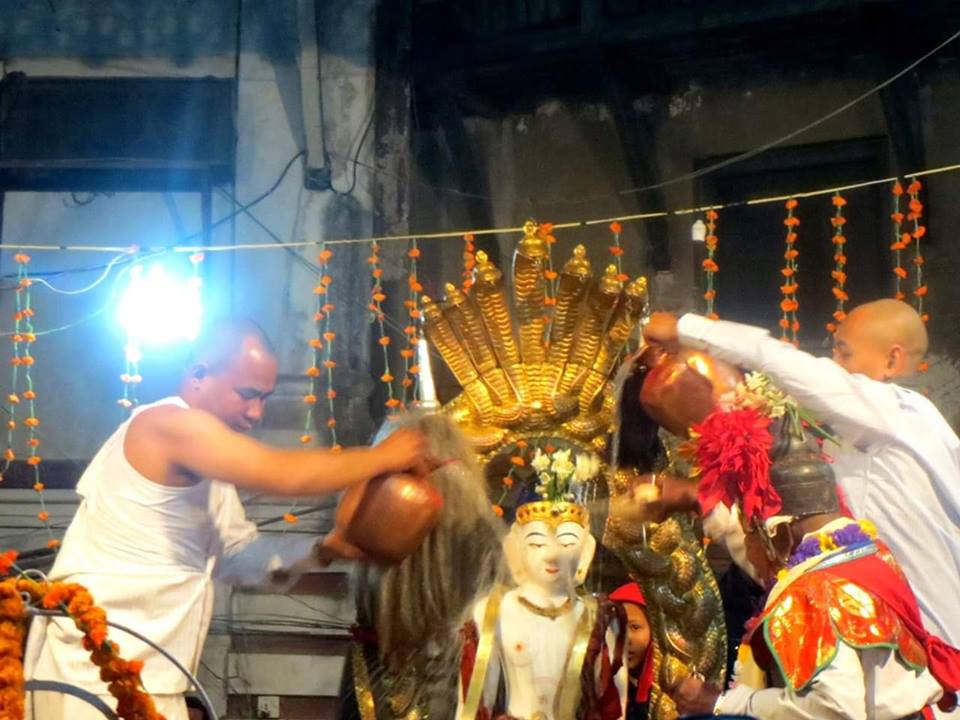
Janabahaa Dyo’s annual bathing ritual takes place at Kanak Chaitya Mahavihara or Janabahal, Indrachowk. This is an elaborate annual bathing ceremony that takes place on Pousha Sukla Asthami. Starting on the eighth day of the waxing moon in early January, sometimes late December, people arrive with plates of offerings and crowd of Machhendra’s open archway, around the ancient Buddhist Chaityas tooting horns and thumping drums. This is followed by a week-long repainting of the idol carried out by designated priests maintaining strict ritual discipline till purnima.
The bathing and repainting ritual symbolises the non-lasting nature of everything, including someone as powerful as Aryaavalokitesor. Locals believe that one who worships Karunamaya is believed to have a prosperous life and who witness this event will get success in his/her life.
Every year the ceremony is organised by caretaker priest clan of Janabahaa Dyo named Sangha. The ritual starts only after the living Goddess of Nepal arrives at the premise who is believed to be the main spectator of the ritual.
The crowd’s level of excitement raises high after the arrival of Goddess Kumari. Inside the courtyard the bathing ceremony takes place on a concrete stage. This stage is especially made for the bathing ritual of Janabaa Dyo which is beautifully decorated with garland of flower and lights. The ritual is done by main five priests who are dressed in white wearing few ornaments and colourful aprons. The main priest starts a dance accompanied by music with a ritual done for taking off the god’s clothes. Then the god is poured by cold water for three times and at end god is showered by warm water.
Along with Janabaa Dyo, there are other two idols on the left and right hand of Janabaa Dyo. They are the idols of Arya Tara — green and white — believed to be incarnated from the tears of Janabaa Dyo. And it is believed that a child becomes calmer if the cloth pieces worn by Arya Taras is worn by a nagging and weeping child. These idols of Arya Taras are revealed only for four days after the bathing ceremony. On other days these idols are always covered by the clothes of Janabaa Dyo.
Legend relates that in ancient times White Machhendra was stolen from Kathmandu by an invading king from Magala to the west. He neglected the idol, eventually discarding it in the Gandaki River. Thereafter the King developed a strange malady, suffering abnormally from cold and from painful body swellings. He had the statue hastily retrieved. As instructed in a dream, he returned to Kathmandu, where it was thrown in a pit. The statue had eventually buried under rubbish and earth. Years later, when a Newari porter, digging for clay at Jamal near Rani Pokhari, unearthed the image, the valley people rejoiced. Their king installed Lord Machhendra in a fine temple and on the advice of learned pundits inaugurated both a bathing festival and annual chariot procession in his honor.
White Machhendra awaits his next outing, a festival held three months later after the bathing ritual. He is carried from his temple in joyful parade to a towering temple-like chariot waiting at Jamal near Rani Pokhari where he was discovered so long before. Starting on the eight day of the waxing moon in late March or early April, his chariot is pushed through the streets of Kathmandu in riotous celebration. Traditionally for four days ending at full moon. Unless the huge wooden wheels break down or some ill omen occurs, in which case the festival is easily, and frequently, prolonged.



